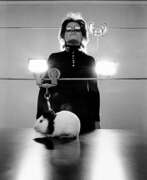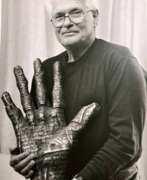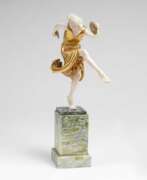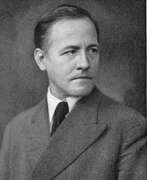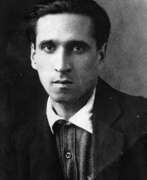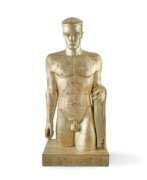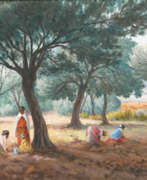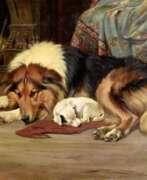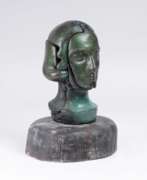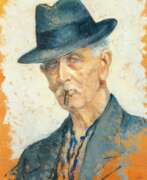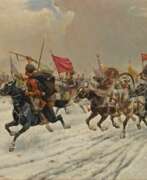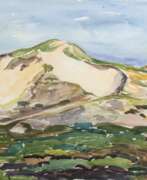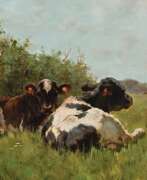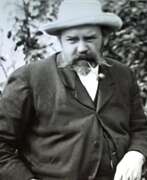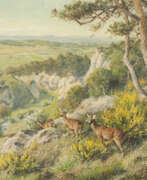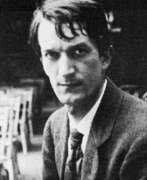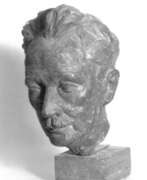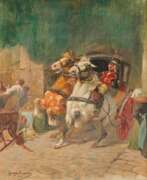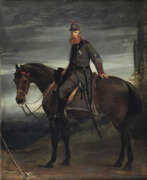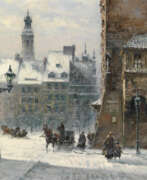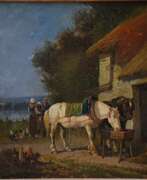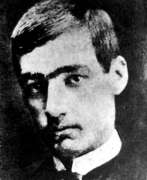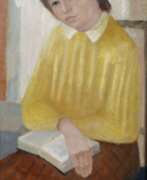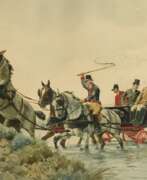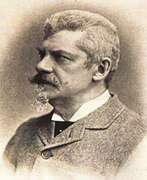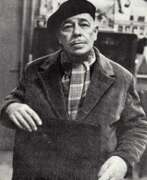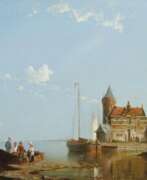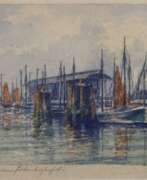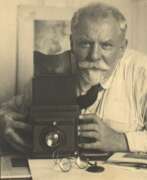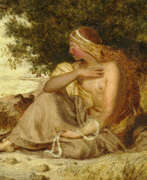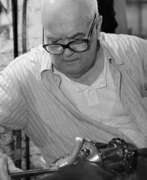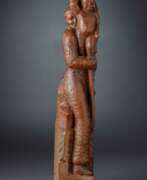Animalists 20th century
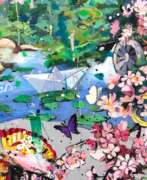

Angelo Accardi is a contemporary Italian artist. He grew up surrounded by both modern and traditional art. Although he studied fine art at the Art Academy of Naples, he never completed his training. Angelo Accardi illustrates surreal visions of everyday life under realistic backdrops of urban and natural landscapes. There is never a single meaning, but a whole story behind each painting. Ironic, striking, and playful, Accardi’s unique perspective and avant-garde style is a result of his diverse inspirations.
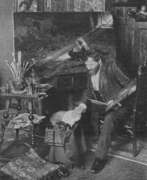

Julius Anton Adam was a German genre painter and animalist who specialised in the depiction of cats and was a member of an influential family of Munich painters.
Julius Anton Adam was a pupil of Professor Michael Echter and later Wilhelm von Dietz at the Munich Academy of Art. He later became a professor himself.
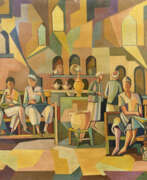

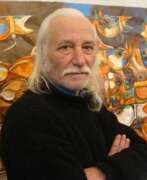

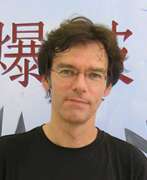

Andreas Amrhein is a contemporary german artist. His first verified exhibition was Arbeiten auf Papier „Blau“ at Galerie Michael Schultz in Berlin in 1994. Andreas Amrhein is most frequently exhibited in Germany, but also had exhibitions in Austria, China and elsewhere.
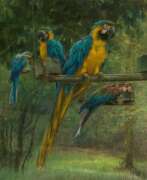

Berthe Constance Ursule Art was a Belgian still life painter. She was trained by Alfred Stevens and advised by Franz Binjé. Berthe Art exhibited her work at the Palace of Fine Arts and The Woman's Building at the 1893 World's Columbian Exposition in Chicago, Illinois. She became a member of the Brussels-based club called Cercle des Femmes Peintres which was active 1888–1893. They were the Belgian equivalent of the French Union des Femmes Peintres et Sculpteurs. She began a Brussels gallery in 1911 together with some friends from the (by then defunct) Circle of Women Painters. The gallery was called the Galerie Lyceum.
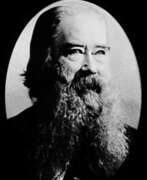

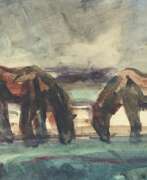

Unica Bachmann-Calcoen (Dutch: Unica Bachmann-Calcoen) was a German-Dutch artist who worked with portraits and depictions of animals, especially horses. She was a pupil of Marie de Jonge (1872-1951) and Martin Monnickendam (1874-1943).
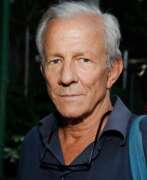

Peter Hill Beard was an American artist, photographer, diarist, and writer who lived and worked in New York City, Montauk and Kenya. His photographs of Africa, African animals and the journals that often integrated his photographs, have been widely shown and published since the 1960s.
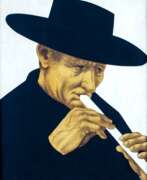

Arne Besser is a contemporary American artist. He received training as an artist at the Art Center School, Los Angeles. There he studied with John Audubon Tyler and Lorser Feidelsson. Beser’s approach to Photo-Realism is to draw from the urban landscape and nature a succinct “set like” image of reality. His city scenes depict New York street life alive with trading and traders, prostitutes and junkies looking for a fix. These visual images iconify the underside of urban life in a way that elevates this point of view to an almost mythic level.
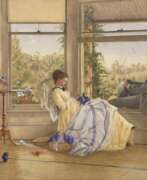

Emma Minnie Boyd, born Emma Minnie Beckett, was an Australian artist. She exhibited publicly between 1874 and 1932 with the Victorian Society of Artists, the International Centenary Exhibition of 1888 (Melbourne), the Royal Academy of Arts (London) and in a joint exhibition with her husband at Como House in Melbourne in 1902.
Emma Minnie Boyd had a talent for watercolour landscapes, although she painted in both watercolour and oil, depicting interiors, figures, portraits, still lifes and floral studies. She is part of the Boyd artistic dynasty that began with Emma and her husband Arthur.
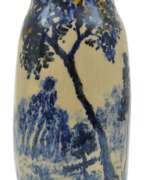

Doris Lucy Eleanor Bloomfield Boyd was an Australian artist, painter and ceramicist. Doris Gough studied under Bernard Hall and Frederick McCubbin at the National Gallery School where she met Merric Boyd, a fellow student and potter. In 1915, she married Boyd. Doris decorated many of Merric Boyd's works between 1920 and 1930. These were mostly pieces for domestic use, featuring Australian flora and fauna.
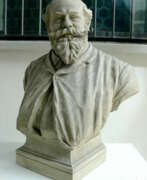

Anton Braith was a German painter of the second half of the nineteenth and early twentieth centuries. He is known as a painter, landscape painter and animalist.
Anton Braith was active for a total of 53 years. His creative path consists of four periods. At first, the artist imitated Dutch painting, then specialized in portraits of animals surrounded by nature. Between 1874 and 1894 he produced his most outstanding works, characterized by vividness and drama. In his last years he focused on animal scenes in mountain meadows, gradually retiring from active artistic endeavors.
Braith was professor of painting at the Munich Academy of Painting and an honorary member of the Royal Academy of Fine Arts Munich.
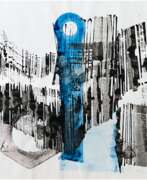

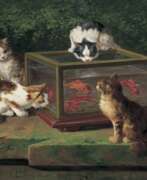

Alfred-Arthur Brunel de Neuville was a French painter known mainly for paintings of still life and animals, especially cats. His works are in museums at Béziers, Brest, Chateau Thierry, and Louviers.


Arthur Brusenbauch was an Austrian painter. Arthur Brusenbauch learned from Johann Kautsky and then worked as a stage decorator himself. He studied in Vienna at the Staatsgewerbeschule and the Academy of Fine Arts, interrupted by military service and imprisonment. In 1920 he became a member of the Vienna Secession, and in 1939 he moved to the Künstlerhaus. In 1928 he had represented Austria in the art competitions of the 1928 Olympic Games. From 1937 to 1941 he participated in all major German art exhibitions in Munich with seven oil paintings. There, in 1939, Hitler acquired the picture of Melk an der Donau in festive decorations. Brusenbauch, who is attributed to late impressionism, dealt with fresco painting and graphics.
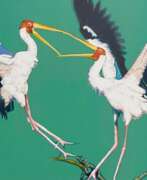

Fran Bull is an American sculptor, painter, and print-maker living and working in Brandon, Vermont and Barcelona, Spain. Bull became known originally for her Photorealism paintings made in the mid 1970s and 80s. In the late 1980s, Bull’s art began to develop towards abstraction, or neo-abstract expressionism. Sparked by her newfound approach to painting, in the mid-1990s Bull began to explore other media. Since that time her artistic output has included performance art, sculpture, mixed media, and printmaking, as well as painting. She has been especially prolific in the area of printmaking. Bull has produced many diverse series of etchings that continue to be exhibited worldwide.
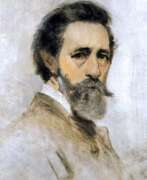

Anton Burger was a German painter, draftsman and etcher. He was a prolific and versatile painter, producing works in almost every genre. His paintings sold very well and, in the area around Kronberg, it was considered a sign of good taste to have a "Burger" in one's home. In 1861, he and Jakob Fürchtegott Dielmann (an old friend from his days at the Städelschule) founded the Kronberg Artists' Colony, where he remained until his death. He was highly regarded and came to be known as the "King of Kronberg".
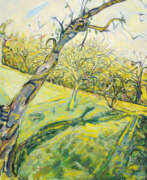

Bernard Chaet was an American artist. Chaet is known for his colorful, dynamic modernist paintings and masterful draftsmanship, his association with the Boston Expressionists, and his 40-year career as a Professor of Painting at Yale University. His works also include watercolors and prints. In 1994, he was named a National Academician by the National Academy of Design. Chaet's works are in the permanent collections of many important museums. Chaet is known for his association as a first generation Boston Expressionist. Having studied with Zerbe, a father of Boston Expressionism, Chaet's early works certainly adhere to the techniques and philosophy of the school.
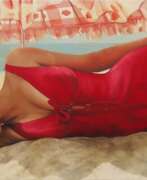

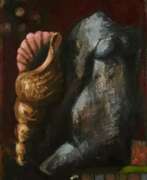

Peter Chevalier is a German painter whose paintings and drawings are close to surrealism. In the 1980s, Chevalier juxtaposed the realistic with the abstract in his paintings. Clearly configured individual but combined things (houses, airplanes, stumps of columns, light bulbs, bones, etc.) dominated, which – as if one were cutting out illustrations from magazines and reassembling them as a collage – are inconsistent in their proportions in the pictorial context.
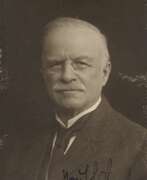

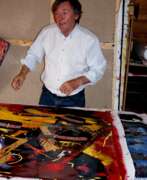

Christian Clerebout is a French contemporary artist. He spent his childhood in Africa, which has left an indelible imprint in his painting style. He studied art from 1966 until 1979 in Paris and Rome. Before settling indefinitely in Brittany, he ran away to North America, lured by the United States, and New York, in particular. This is where his powerful cityscapes evolved: engorged with sweeping movement, brilliant colors and intense darks and lights. He has expanded creatively to include such subject matters as orchestras, airports, elephants and financial themes, but his expressive style is always recognizable.
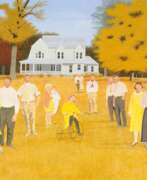

Carroll James Cloar was an American artist whose work focused on surreal views of the US South and on poetic depictions of childhood memories. He often worked with old photographs found in family albums.
Carroll James Cloar's paintings often depicted rural landscapes, small towns and ordinary people of the South. He was influenced by the regionalist movement of the 1930s and 1940s, which sought to capture the unique culture and traditions of different regions of the United States.
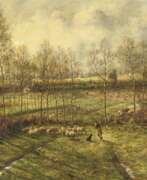

Marie Collart-Henrotin was a Belgian artist who mainly painted landscapes and animals. Collart was primarily self-taught as an artist. She became a founding member of the Société Libre des Beaux-Arts in 1868. In 1870, she won a gold medal at the Salon des artistes français. She became the first women to be named a Chevalier in the Belgian Order of Leopold in 1880. Collart exhibited her work at the Palace of Fine Arts and The Woman's Building at the 1893 World's Columbian Exposition in Chicago, Illinois. Her work is included in the collections of the Royal Museum of Fine Arts Antwerp and Royal Museums of Fine Arts of Belgium.
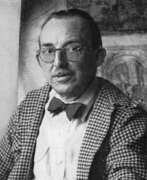

Dean Cornwell was an American illustrator and muralist. His oil paintings were frequently featured in popular magazines and books as literary illustrations, advertisements, and posters promoting the war effort. Throughout the first half of the 20th century he was a dominant presence in American illustration. At the peak of his popularity he was nicknamed the "Dean of Illustrators". He began his professional career as a cartoonist for the Louisville Herald. Soon thereafter he moved to Chicago, where he studied at the Art Institute and worked for the Chicago Tribune. Cornwell's paintings were in Cosmopolitan, Harper's Bazaar, Redbook, and Good Housekeeping magazines. He painted murals for the Los Angeles Public Library, the Lincoln Memorial Shrine in Redlands, California etc. Cornwell taught and lectured at the Art Students League in New York. He served as president of the Society of Illustrators from 1922 to 1926, and was elected to its Hall of Fame in 1959.
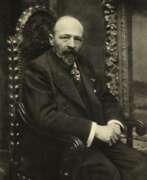

Franciscus Eduardus Maria (Franz) Courtens (1854–1943) was a Belgian painter. He was a leading figure in the Dendermonde School, famous for his paintings of nature and landscapes. Courtens was professor at the Royal Academy of Fine Arts (NHISKA) in Antwerp from 1904 till 1924. He was a personal friend of Leopold II, who gave him the privilege of free access to the royal Parc of Laeken. Some of his paintings stil remain in the Royal collection.
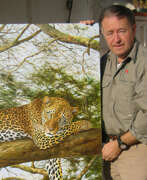

Pierre Cousy is a contemporary French animal painter. For twenty years he worked in a team of researchers in the history of the Languedoc-Roussillon region, specializing in the Upper Paleolithic. His job was to sketch material found during excavations and create illustrations for scientific publications. In 1983, Pierre Cousy decided to devote himself entirely to painting. Experience with the historical past, love for nature and animals, as well as a passion for hunting led him to the genre of animalistics.
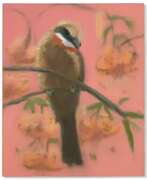

Ann Craven is a contemporary American painter known for her lush depictions of the moon, birds, and multi-colored stripes. Craven’s use of serial motifs belies her interest in ephemeral moments, seasonal cycles, and the changeable qualities of painting. She received her BFA from the Massachusetts College of Art in 1986 and her MFA from Columbia University in 1993. She notably served as an artist assistant to Alex Katz, whose work influenced her own. Much of Craven’s practice revolves around painting en plein air, in this way she has captured the moon on hundreds of nights over the years. The artist currently lives and works in New York. Today, her works are held in the collections of the Whitney Museum of American Art in New York, the Museum of Contemporary Art in Chicago, and the Institute of Contemporary Art in Miami, among others.
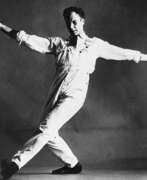

Mercier Philip "Merce" Cunningham was an American dancer and choreographer who was at the forefront of American modern dance for more than 50 years. He frequently collaborated with artists of other disciplines, including musicians, graphic artists and fashion designers. Works that he produced with these artists had a profound impact on avant-garde art beyond the world of dance. There have been numerous exhibitions dedicated to Cunningham's work. Also, his visual art is represented by Margarete Roeder Gallery.
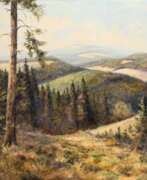

Paul Wilhelm Dams was a German animal painter who specialized in hunting motifs. He painted game - wild boars, foxes, deer, roe deer, hares - in a winter or autumn forest landscape, he especially loved birds - capercaillie, black grouse and pheasants. The artist lived in Ridsend in Bavaria, and during the Second World War also in Braunschweig, where he painted numerous motifs of the Harz mountains.
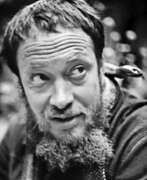

Rostislav Alexandrovich Danov (Russian: Ростислав Александрович Данов) was a Soviet artist of the late twentieth century. He is known as a graphic-animalist, naturalist, writer and professional snake artist.
Rostislav Danov began practicing animalistics in the last years of his life. He was the author of many works, some of which are kept in the Darwin Museum in Moscow. The artist illustrated books, including "Rare and Endangered Animals. Amphibians and Reptiles." Gorlov was also working on an unfinished book, "Year of the Snake," where he planned to describe the seasons of Turkmen nature through the eyes of a gyurza. His manuscripts, hundreds of drawings and 15 volumes of field diaries with graphic sketches have been preserved.
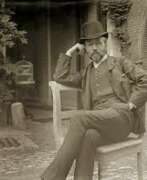

Jacques de Lalaing was an Anglo-Belgian painter and sculptor, specializing in animals. Lalaing was raised in England until 1875, when he moved to Brussels. He trained as an artist under Jean-François Portaels and Louis Gallait at the Académie Royale des Beaux-Arts in Brussels. With the encouragement of Thomas Vinçotte and Jef Lambeaux, Lalaing began to sculpt in 1884. As a painter he continued to work in a realistic, naturalistic style, as a portrait painter and producing historical scenes. As a sculptor he produced allegorical bronzes and memorial art. Along with his fellow animalier sculptors Léon Mignon and Antoine-Félix Bouré Lalaing established a distinctively Belgian tradition of animal art, to which the flourishing Antwerp Zoo contributed inspiration. In 1896 Lalaing became a member of the Royal Academy where he had studied, and from 1904 through 1913 he served as its director. His works are represented in the collections of museums in Antwerp, Bruges, Brussels, Ghent and Tournai.
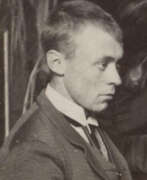

Pieter Cornelis de Moor, a Dutch artist, stands out as a versatile and innovative figure in the art world. His education at the Academy of Visual Arts in Rotterdam and the Drawing Academy in Antwerp laid the foundation for a career marked by diversity and creativity. De Moor's achievements, including a silver medal in the Prix de Rome in 1887, underline his early recognition and the promise of his artistic journey.
De Moor's artistry was not confined to a single medium; he was adept in drawing, etching, painting, watercolor, producing lithographs, and working as an illustrator. His artworks, ranging from "Dancing Women" to "Poultry on a Yard" and "An Elegant Lady Feeding Peacocks," showcase his broad thematic interests and technical skills. Notably, his works are held in prestigious collections, including the Rijksmuseum and the Dordrechts Museum.
The artist's life was rich with experiences, having worked across Europe and eventually settling in the United States. His legacy, punctuated by exhibitions in museums such as Museum Boijmans Van Beuningen and the Drents Museum, continues to captivate art enthusiasts and collectors.
For collectors and art experts, delving into the works of Pieter Cornelis de Moor offers a unique glimpse into the evolution of Dutch art. His contributions, particularly in the realm of Symbolism, highlight an era of artistic exploration and innovation.
Stay informed about new product sales and auction events related to Pieter Cornelis de Moor by signing up for updates. This subscription is your gateway to the latest acquisitions and opportunities in the world of this distinguished artist.
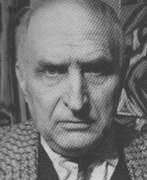

Arthur Degner was a German painter, graphic artist and sculptor. Degner studied between 1906 and 1908 at the Art Academy in Königsberg under Ludwig Dettmann and Otto Heichert. In 1909 he came to Berlin after a stay in Munich. In 1912 he exhibited in the gallery of Paul Cassirer, at whose suggestion he had traveled to Paris in 1910. In 1919 he became a board member of the Free Secession, of which he had been a member since 1911. In 1920 he was appointed to the Königsberg Academy. In 1925 he returned to Berlin, where he taught at the Academy of Fine Arts (HBK). From 1931 to 1933 he was chairman of the Berlin Secession. After the National Socialists seized power, he was banned from working and exhibiting. Nevertheless, the Villa Romana Prize of the German Association of Artists enabled him to study in Florence in 1936 and in 1937 he became a member of the Association of Berlin Artists.
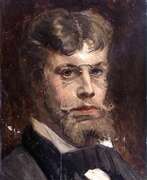

Jean-Joseph Delvin was a Belgian painter who specialized in scenes with animals (primarily horses). He attended the Royal Academy of Fine Arts in Ghent, where he studied under Théodore-Joseph Canneel, and worked in the studios of Jean Portaels in Brussels. Later, he undertook study trips to France and Spain. For many years, he shared a small workshop in a garden shed with Gustave Den Duyts. In 1883, he was invited to join the secessionist group Les XX, but he resigned only a few years later in 1886. He was also a member of La Libre Esthétique and Kunst van Heden (Art for Today) in Antwerp. At about that time, he began teaching at the Academy in Ghent and later became its Director (1902–1913). Among his many well-known students there were Albert Baertsoen, Gustave De Smet, Frans Masereel, George Minne and Frits Van den Berghe.
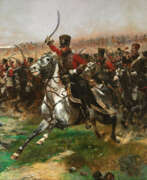

Jean-Baptiste Édouard Detaille was a French academic painter and military artist noted for his precision and realistic detail. He was regarded as the "semi-official artist of the French army". Detaille made his debut as an artist at the Salon—the official art exhibition of the Académie des Beaux-Arts—of 1867 with a painting of Meissonier's studio. At the Salon of 1868, he exhibited his first military painting, The Drummers Halt, which was based solely on his imagination of the French Revolution. Detaille enlisted in the 8th Mobile Bataillon of the French Army when the Franco-Prussian War broke out in 1870; by November he was seeing and experiencing the realities of war. This experience allowed him to produce his famed portraits of soldiers and historically accurate depictions of military manoeuvres, uniforms, and military life in general. He eventually became the official painter of the battles. He published a book called L'Armée Française in 1885, which contains over 300 line drawings and 20 color reproductions of his works.


Marguérite Dielman was a Belgian still life painter. She was a student of Jean Portaels and Ernest Blanc-Garin and she mainly painted still lifes and animals. In 1888 she was co-founder of the «Cercle des Femmes Peintres». They organized four exhibitions (1888, 1890, 1891, 1893) after which the group may have fallen apart. Her oil painting «Summer Flowers in a Vase» was auctioned in June 1999 for £1,840 at Christie's, London.


Edwin James Douglas was a British animal painter.
Edwin was the son of the famous portrait painter James Douglas, studied at the Royal Scottish Academy schools and exhibited his first works at the Royal Scottish Academy at the age of only 17. Edwin Douglas painted hunting scenes, dogs and horses, which attracted many famous patrons, including Sir Charles Tennant and Queen Victoria. She even purchased a painting of setters as a birthday present for King Edward VII.
Douglas was a very successful artist whose animal paintings, like those of his predecessor Landseer, resonated with Victorian collectors. He was best at dogs and horses, but he also painted portraits and genre pictures. Between 1869 and 1900 he exhibited at the Royal Academy, forty-one works in all, at the Royal Scottish Academy and other venues in London and the provinces. In addition to painting, Douglas had a passion for cattle breeding and was elected an honorary life member of the Jersey Cattle Society of England.


William Herbert "Buck" Dunton was an American artist and illustrator born in 1878 and passed away in 1936. He was one of the founding members of the Taos Society of Artists, a collective of artists in New Mexico that was considered one of the most influential art groups in the United States in the early 20th century. Dunton was known for his works dedicated to the life and culture of Native Americans, as well as many Western landscapes. In his paintings, he conveyed the beauty and power of nature, as well as the life of Native Americans in their natural environment. Buck Dunton was a recognized master of his craft, and his works remain popular and sought after in the world of art.


Marcel Dzama is a contemporary artist from Winnipeg, Manitoba, Canada who currently lives and works in New York City. His work has been exhibited internationally, in particular his ink and watercolor drawings. Dzama works extensively in sculpture, painting, collage, and film. The artist is also known for his intricate dioramas and large scale polyptychs that draw from his talents across a range of media. Dzama works in multiple disciplines to bring his cast of human figures, animals, and imaginary hybrids to life, and has developed an international reputation and following for his art that depicts fanciful, anachronistic worlds.
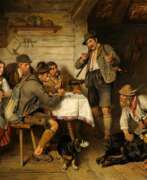

Adolf Eberle was a German painter of the second half of the nineteenth and early twentieth centuries. He is known as a genre painter and animalist.
Adolf Eberle specialized in depicting rural life, especially Bavarian and Tyrolean farmers and hunters. Early in his career, he was interested in historical subjects, but quickly returned to depicting peasant and animal life. His painting "The Sale of the Last Cow" brought him his first great success in 1861, and in 1879 at the Munich exhibition his work "The First Deer" was highly praised by the jury.
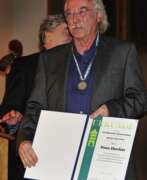

Klaus Eberlein was a German graphic artist, illustrator and ceramic sculptor. He initially completed training as a chromolithographer. From 1962 to 1968 he attended the Academy of Fine Arts in Munich, and from 1968 he was a master student of Hermann Kaspar, receiving a final diploma from the academy. Eberlein was a member of the Association for Original Etching, the Dachau Artists' Association and the Munich Artists' Association. In 2013 he was accepted into the South German literary association Münchner Turmschreiber.


Otto Eerelman was a Dutch painter; best known for his depictions of dogs and horses. He was also a court painter and did several portraits of Wilhelmina, as Princess and Queen. His best known painting, "De paardenkeuring op de Grote Markt op de 28ste augustus", depicts an annual celebration (featuring horses) held to commemorate the lifting of the Siege of Groningen.


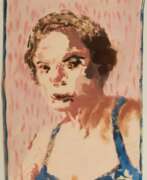

Simon English is a contemporary british artist. He is best known for his large and small-scale 'painted drawings' in which he mingles his distinctive imagery and words. He moves lightly between tight draftsmanship and a playfully sloppy application of colour and line. Language is paramount with diaristic musings interspersed with song lyrics, poetry and humorous one-liners. Self-described as 'automatic', his work has the spontaneity of stream-of-consciousness, exploring themes of love and loss, as well as gay and popular culture. Simon English lives and works in London. He emerged on the London Art scene in 1994 with an exhibition of paintings at the Saatchi Gallery as part of Young British Art III. Simon has exhibited internationally at numerous institutions.


Heinrich Faltermeier was a German sculptor. After an apprenticeship as a goldsmith and years of travel, including to Spain, Faltermeier studied from 1936 to 1943 at the Academy of Fine Arts in Munich. He worked in accordance with the Nazi concept of art and created war memorials. From 1938 to 1944, with the exception of 1941, he was represented at all major German art exhibitions. Faltermeier's preferred working materials as a sculptor were bronze, marble and wood.


Max Feldbauer was a German painter, associated with the Munich Secession. He is primarily known for rural, Bavarian scenes. From 1901 to 1915, he taught at the Academy of the Münchner Künstlerinnenverein (women artists' association). In 1908, he joined the Munich Secession. He also ran his own painting school, in Mitterndorf, near the Dachau art colony, from 1912 to 1922. He left the Secession in 1913; becoming one of the founders of the New Secession, and served as a board member. In addition to all of these activities, he provided illustrations for Die Jugend (Youth), a weekly arts magazine.


Maria Paula Figueiroa Rego was a Portuguese-British visual artist known particularly for her paintings and prints based on storybooks. Rego's style evolved from abstract towards representational, and she favoured pastels over oils for much of her career. Her work often reflects feminism, coloured by folk-themes from her native Portugal.


Otto Hermann Fikentscher was a German painter, etcher, lithographer, and sculptor born in 1862 and died in 1945. He studied at the Kunstgewerbeschule de Dresde and the Academy of Fine Arts in Munich. Fikentscher's main focus was on the representation of animals, often in picturesque surroundings, in oil paintings, watercolors, lithographs, or engravings. He exhibited his works several times at major art exhibitions in Berlin, Düsseldorf, Munich, and Karlsruhe.


Jakob Fischer-Rhein, a German artist, was a talented draftsman, portrait and landscape painter.
After training as a technical draftsman, he studied at the Düsseldorf Art Academy and continued his studies in Munich. During the First World War he was a prisoner of war in France, where he was able to continue painting.
Fischer-Rhein also established himself in America and created impressive works, particularly of the New York skyline.
He was a member of the SA during the Nazi era and was represented at National Socialist exhibitions. After the war he settled in Miltenberg and painted motifs from various cities. Fischer-Rhein considered himself an academic painter and stayed away from modern trends.


Fritz Fleer is a German painter and sculptor. He studied at the Hamburg University of Fine Arts in the class of Edwin Paul Scharf.
As independent artist, Fritz Fleer has been creating works for urban planning since the 1950s; in Hamburg he was commissioned for 17 sculptures by the municipal housing company SAGA.


Walton Ford is an American artist. He is known for his large-scale, highly detailed paintings that depict natural history subjects and explore the relationships between humans and animals.
Ford studied at the Rhode Island School of Design and later from Yale University. His work is inspired by the tradition of natural history painting, but he subverts this tradition by using his paintings to critique colonialism, environmental degradation, and the ways in which humans have interacted with the natural world.
Ford's paintings are highly detailed and often include multiple narratives within a single image. He uses a combination of watercolor, gouache, and ink to create his large-scale works, which can be several feet in height and width. His paintings are also highly stylized, featuring elements of graphic design and pop culture.
Ford has exhibited his work extensively, including at the Whitney Museum of American Art in New York, the Hamburger Bahnhof Museum in Berlin, and the Musée de la Chasse et de la Nature in Paris. His work is also held in the collections of several major museums, including the Museum of Modern Art in New York and the Smithsonian American Art Museum in Washington, D.C.


Rudolf Ferdinandovich Frentz (Russian: Рудольф Фердинандович Френц) was a Russian artist known for his paintings and graphic works. Born in 1831, he received his artistic education at the Berlin Academy of Arts. Frentz specialized in genre scenes and antimalistics. He was also a court painter, highlighting his high status and recognition of his skill.
One of Frentz's artistic features was his attention to detail and ability to depict movement. His paintings often convey the drama and dynamism of events.
Frentz is also known as the father of artist Rudolf Rudolfovich Frentz, who followed in his father's footsteps and became a renowned painter. Rudolf Ferdinandovich's legacy significantly influenced his son's work, passing on not only technique and skill but also a deep understanding of art.
As a court painter, Frentz created works that adorned palaces and imperial residences. His works can be seen in Russian museums and galleries, such as the Russian Museum and the Tretyakov Gallery. They continue to inspire a new generation of artists and art enthusiasts.
For updates on new sales and auction events related to Rudolf Ferdinandovich Frentz, sign up for our updates.


Wilhelm Friedrich Frey was a German painter of the second half of the 19th and early 20th centuries. He is known as a painter of the Munich School.
Frey became famous as an animalist and landscape painter who also showed himself in portraits and genre drawings. His style evolved from Munich School techniques to academic realism with subtle color. In the late nineteenth century he turned to the coastal landscapes of northern Germany in his work, exploring color and air movement through the dramatic play of wind and clouds. In his later years, Frey became fascinated with landscapes of Lake Constance, the Rhine, and the Alps.
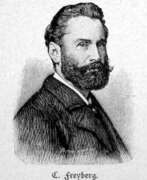

Conrad Freyberg was a German artist of the second half of the nineteenth and early twentieth centuries. He is known as a painter and sculptor.
Freyberg specialized in equestrian portraits and group portraits of horsemen, combining realistic likeness with delicate rendering. Inspired by the wars of 1866 and 1870-1871, the artist created battle paintings, including The Battle of Sadov and The Battle of Skalica. He later became a portrait painter and also worked in the genres of historical painting, animalistic painting and sports scenes. For his achievements, he received the title of court painter. The master was one of the creators of the bronze monument to Prince Albrecht of Prussia in Berlin's Charlottenburg district in 1901.


Ernst Frick was a Swiss painter. As far as can be ascertained, Frick began painting around 1917. He was taught by Arthur Segal in Ascona. Frick painted in charcoal, oil and watercolour. His preference was for nature and animals, but also working people. He was influenced by the artist group Der Blaue Reiter. In 1924 he was a founding member of the artists' association Der Grosse Bär. After the dissolution of the group Der Grosse Bär in 1941, he remained artistically active and joined newly formed Asconese artist groups.
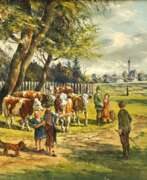

Alfred Fritzsching is a German artist known as Painter, graphic artist, draftsman, sculptor, commercial, commercial graphic artist. He began his training as a commercial graphic artist at the Blocherer School for Graphic and Advertising in Munich and worked as an advertising specialist. In 1970 Alfred Fritzsching became a member of Munich Artists 'cooperative and participated in exhibitions at the Haus der Kunst in Munich. From 1978, he worked as a freelance painter and also as board member and juror of the Munich Artists' Cooperative.
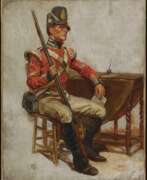

Emile Edwin Ganz is a Swiss-Belgian painter, specializing in the representation of horses and military scenes. In his early days, Ganz mainly drew military scenes, a genre that only a few 19th-century artists mastered. His masterpiece in the genre is The Attack of Scherpenheuvel, a report on the maneuvers of the grenadiers in 1894. In 1901 he entered the service of Princess Clémentine as a painter; he held this position until 1903. In 1903, he also brushed some of King Leopold II's horses. From that moment, he was no longer interested only in the horse itself, but in the regional draft horse, as well as in the people and the rural world: newspaper sellers, old horses in a depot, the harvest in the fields , beet harvest, landscape. Many of his designs for military uniforms were printed in color lithograph.


Henry Garland was a British painter. He was primarily known for his landscape paintings, which often depicted rural scenes of England, Scotland and Wales.
Garland's work is characterised by a romanticised view of the countryside with rolling hills, livestock and tranquil streams. The painter was particularly adept at capturing the atmospheric effects of light and weather in his paintings, and his use of colour was subtle and evocative.
Today Henry Garland is regarded as one of the leading British landscape painters of his generation, and his work is still highly regarded for its sensitivity to the natural world and its depiction of a rapidly changing society.


Friedrich Otto Gebler was a German animal painter.
Gebler studied at the academies in Dresden and Munich and specialized in rural themes and animalistic painting. The main character in Goebler's paintings is sheep, the life of which he studied thoroughly. The sheep graze, rest, worry, there are even expressive portraits of sheep. Contemporary critics have recognized him as the best artist in this subject.
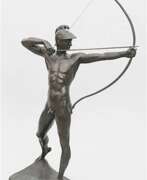

Ernst Moritz Geyger was a German artist known for his work in sculpture, painting and engraving. His work is included in the collections of the Los Angeles County Museum of Art, the Carnegie Museum of Art and the Fine Arts Museums of San Francisco.


Piero Gilardi is an Italian painter and decorator. A catalytic figure in the Arte Povera movement centred in Turin in the late 1960s, Gilardi's utopian and selfless commitment to the association of neo-avant-garde artists from Western Europe and North America made him one of the most influential artistic figures of the period.
Piero Gilardi became internationally renowned and witnessed the influence of Pop Art in Europe. An itinerant artist, theorist and organiser, he contributed to the birth of Arte Povera, especially working to establish relationships with other similar initiatives that were simultaneously taking place outside of Italy.
Much of Gilardi's later work is united by a theme or interaction between the work and the viewer. The master has devoted more than a decade to his most ambitious project, Parco Arte Vivente (Park of Living Art or PAV). A collaborative effort that grew out of Gilardi's design, the PAV is a monumental undertaking that has transformed an abandoned plot of land in the heart of Turin's working-class Lingotto district into a six-acre green space dedicated to public, environmental and artistic interests.
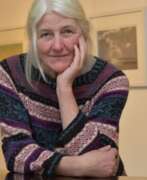

Frauke Gloyer is a contemporary German artist. She studied freehand painting at the University of Fine Arts in Braunschweig. She has been working as a freelance artist since 1988.
Frauke Gloyer's work includes expressionist landscapes, still lifes, portraits and animal studies.


Alexei Nikolaevich Glukharyov (Russian: Алексей Николаевич Глухарёв) is a Soviet and contemporary Russian artist. He is known as a painter and graphic artist, as well as a teacher.
Alexei Glukharyov worked as an art teacher and graphic designer in Central Asia at the beginning of his career. In 1984 his first solo exhibition in Moscow took place. From 1984 to 1990 he created a large collection of horse portraits for state stud farms and breeding farms. His works have been exhibited in Russia and abroad and are also in private and museum collections.


Roger Godchaux was a French sculptor, painter, and draftsman, recognized for his exceptional portrayal of animal figures. Born on December 21, 1878, in Vendôme, France, Godchaux's journey in the arts was marked by innovation and a profound connection to the animal form, particularly felines and elephants. His academic training at the Ecole des Beaux-Arts under the tutelage of Jules Adler and Jean-Léon Gérôme honed his skills, leading him to exhibit annually at the Salon des Artistes Français from 1905.
Godchaux's works are characterized by their dynamic force and volume, a testament to his rigorous observation and detailed drawings. His models, often sourced from zoos, allowed him to capture the dense muscularity of young felines and large animals, creating sculptures that are both lifelike and expressive. His admiration for Antoine-Louis Barye is evident in the vitality and precision of his animal sculptures.
For collectors and connoisseurs of fine animalier sculpture, Roger Godchaux's works remain a pinnacle of the genre. His sculptures, paintings, and designs can be found in galleries and private collections, celebrated for their timeless appeal and artistic excellence. To explore Godchaux's captivating world of animal art, sign up for our updates and discover the depth of his sculptural legacy.
